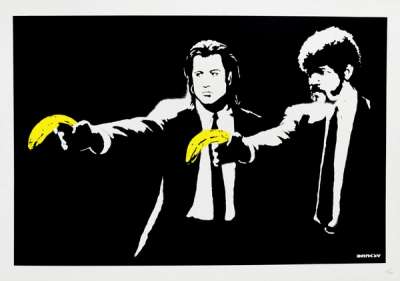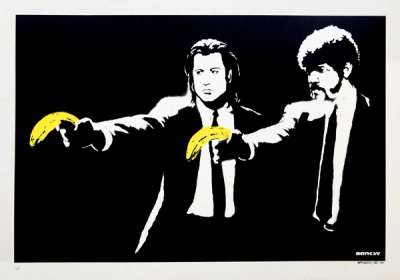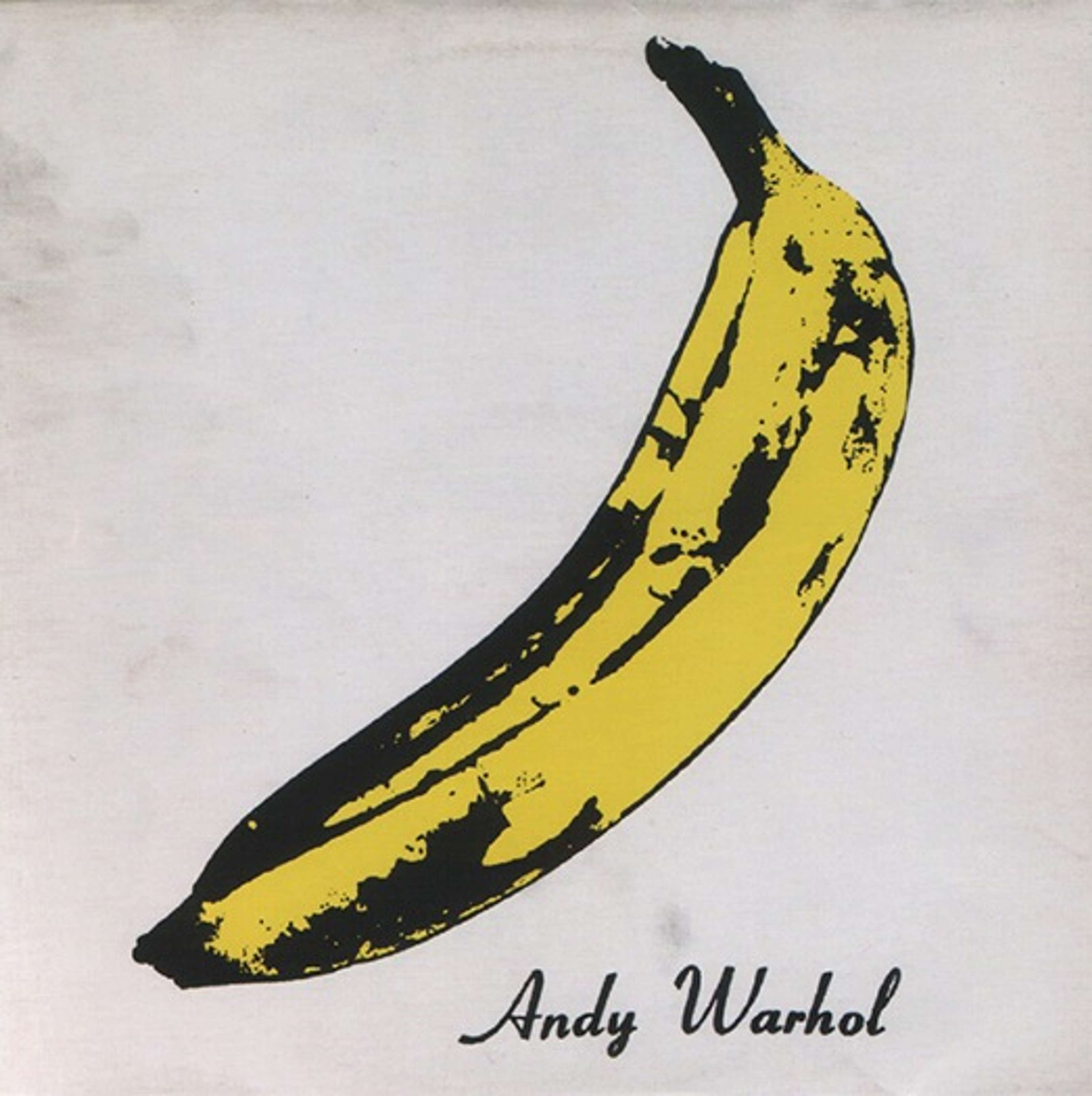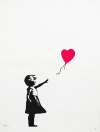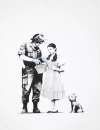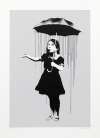Pulp
Fiction
Banksy's Pulp Fiction reimagines a scene from Quentin Tarantino's cult classic by the same name. Banksy depicts John Travolta and Samuel L. Jackson in bold monochrome, punctuated by the yellow bananas they wield instead of guns. The series is a playful look at the cultish nature of film and art.
Banksy Pulp Fiction For sale
Pulp Fiction Value (5 Years)
Works from the Pulp Fiction series by Banksy have a strong market value presence, with 98 auction appearances. Top performing works have achieved standout auction results, with peak hammer prices of £123000. Over the past 12 months, average values across the series have ranged from £11921 to £100000. The series shows an average annual growth rate of 19.34%.
Pulp Fiction Market value
Auction Results
| Artwork | Auction Date | Auction House | Return to Seller | Hammer Price | Buyer Paid |
|---|---|---|---|---|---|
 Pulp Fiction Banksy Unsigned Print | 24 Sept 2025 | Sotheby's London | £14,450 | £17,000 | £23,000 |
 Pulp Fiction Banksy Signed Print | 16 Apr 2025 | Phillips New York | £34,000 | £40,000 | £60,000 |
Sell Your Art
with Us
with Us
Join Our Network of Collectors. Buy, Sell and Track Demand
Meaning & Analysis
A visual reference to Quentin Tarantino's eponymous film, Banksy's Pulp Fiction features actors John Travolta and Samuel L. Jackson wielding bright yellow bananas. A doctored version of an iconic scene, in which characters Vincent and Jules shoot down an aggressor, the work comprises white, stencilled sections of paint arranged on a black background. The image first appeared in 2002 as an in situ stencil work, painted close to London's Old Street tube station
The original mural was visible until 2007, when Transport for London painted over it. They did this on the grounds that the mural could contribute to an atmosphere of social decay and neglect in the English capital, ignoring the fact that the well-known image drew countless art fans and tourists to the local area. When the mural was covered, a local artist sprayed-painted the words “Come Back” - addressed to Banksy himself - in its place. Loath to refuse his fans' wishes, Banksy then repainted a version of the work in exactly the same place. In a playful inversion of the original work, this time the Pulp Fiction characters held real pistols and wore banana costumes.
In January 2007, the late graffiti artist Ozone wrote over the new piece with the words “If it's better next time I'll leave it”. The 19-year-old artist tragically passed away a few days later, along with fellow artist Wants, after both were hit by an underground train in Barking, East London.
Banksy created another piece to cover his original Pulp Fiction mural. Depicting an angel wearing a bulletproof vest and holding a skull in his right hand, this new work was painted in tribute to the two young graffiti artists. To accompany the work, Banksy posted a note on his website that read “When we lost Ozone we lost a fearless graffiti writer and as it turns out a pretty perceptive art critic. Ozone – rest in peace”. The tribute mural was quickly referred to as “Ozone's Angel”. Subsequently, Banksy's original Pulp Fiction mural became even more popular, and began to be mass-reproduced as commercial merchandising.
